Dreams of things possible were common in the new Nebraska Territory, opened for settlement in 1854. When a group of New York businessmen banded together to establish a resort town just north of Omaha, they thought they were going to get rich quick. Little did they know they would establish a longstanding neighborhood whose future is still being written today. This is a history of the Saratoga neighborhood in North Omaha.
Introducing Saratoga, Nebraska
This is a history of the Saratoga neighborhood in North Omaha. Centered at North 24th Street and Ames Avenue, it is one of the oldest neighborhoods in Omaha. It is also has one of the most abandoned historic legacies of any neighborhood in the city.
A century after the town was founded, almost any memory of Saratoga town was gone as the neighborhood flourished and was swallowed whole by Omaha. Streetcars shuttled shoppers around its shopping district, and its homes were packed with middle class families reaching up. However, by the 1970s the neighborhood was suffering the effects of white flight and divestment. It still hasn’t recovered.
Once known as the Town of Saratoga, Saratoga Springs, Sulphur Springs, along with West Saratoga, also known as Cherry Hill also known as Central Park, the neighborhood has a lot of history.

Wild West Roots (Pre-1856)
Although Native Americans once saw it as prime hunting land, the high prairies and savannah land that once comprised North Omaha between the cliffs and North 33rd Street was seen by whites as a wide swatch of territory ripe for development. In 1856, town founded Erastus Beadle launched that process in earnest.
Saratoga was originally a large township that actually filled from the river west to about North 56th Street, from present-day Locust Street on the south to at least Kansas Avenue in the north. The oldest part of the town was around 24th and Ames Avenue, where the Grand Hotel (aka Brownell Hall) was located. Several houses stood there through the pioneer era into the 1920s, and maybe to present times.

The town’s school became present-day Saratoga Elementary School, and operated continuously from the 1860s through 2018. Of course, Brownell Hall became Brownell-Talbot Academy, which is the other lasting vestige of the town.
Some of the other original fixtures in the town of Saratoga included a post office by North 24th and Grand; businesses including a blacksmith and a general store; and at least one church. There were at least 50 houses there within a year of its settlement. There was a road that ran west from town about two miles west to a village called West Saratoga, and today that road is Grand Avenue.
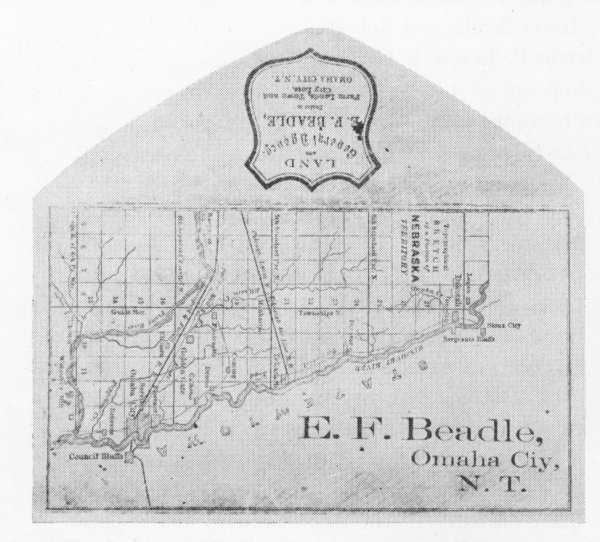
Founding A Town
It’s the summer of 1856, and you crossed your Prairie Schooner wagon at the Lone Tree Ferry from old Kanesville. You decided to head north to find land near the fertile Missouri River Valley basin. You trot along the savannah-like prairie north of Omaha, originally thinking you’d stay at the grimy former Mormon town of Florence.
Foot prints along the old Indian trail you’re traveling get you anxious about stopping for the night, when in the distance you see a little town emerge from the grasses and trees around you. Before you know it you’re engulfed in a dusty frontier town called Saratoga.

Founded in 1857, the town of Saratoga, including Sulphur Springs and West Saratoga, was a boom town in the Nebraska Territory that was born, boomed, and died on the vine within a year.
Erastus Beadle, the representative of a company of men from Saratoga Springs, New York, came to the area first in August, 1856, just after the opening of the Nebraska Territory to settlers. Beadle found a fat bend in the Missouri River and staked a claim. Then he went back to New York and secured funding from a group of investors.
In May 1857, Erastus came back, staying in Omaha and founding the Sulphur Springs Town Company. He secured 320 acres for the town, extending from the river to 36th Street, Fort to Locust Street. He then quickly built a dock on that bend in the river, and called it “Saratoga Bend”.

Soon after Erastus arrived, between April and August of 1857, fifty-four houses were built in Saratoga, compared to neighboring Omaha City, which took two years to accumulate that many houses. The dock brought dozens of wagons daily across the Missouri, landing settlers heading west in the newly-opened Nebraska Territory.
Beadle built a warehouse and docks at Sulphur Springs along the river to outfit settler’s wagons. A lot happened that year, as settlers came through and businesses developed. A few churches were built, and businesses grew up in the area. A group formed to build a grand hotel at the springs called the Saratoga Springs Hotel, and the First Nebraska Territorial Legislature granted a charter to a group in order to build the University of Nebraska in Saratoga. The first church in town was the Saratoga Congregational Church.
Sulphur Springs
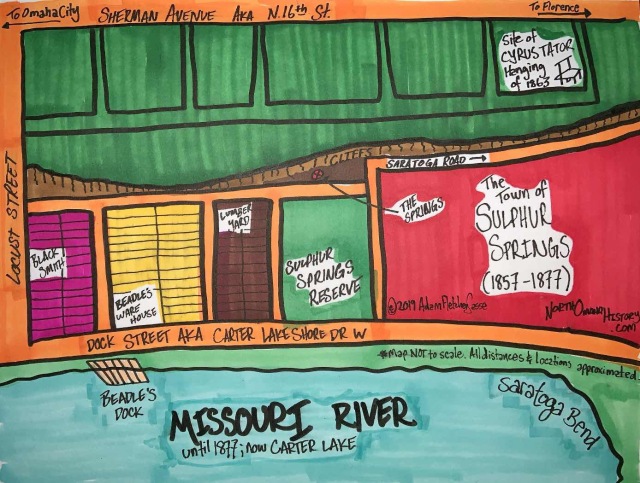
Sulphur Springs was one of the earliest legal docks operating on the Missouri River; there were a lot of illegal docks. Established by Erastus Beadle to serve the town of Saratoga on the Saratoga Bend of the river, it was named for an artesian spring with sulphur water. The springs flowed from the hillside at the base of Wirt Street where present-day North 13th Street would be if it existed. Sulphur Springs was located within the Saratoga township and was paid for by the same company under Beadle’s leadership.
Beadle had a straight road cut up the hill called Locust Street. It intersected with the Omaha-Florence Road, which was later made into Florence Boulevard. Saunders Road was a mile away from the intersection, and was later renamed North 24th Street. Then he gave away lots to people who committed to building on the site by July 1857.
Sulphur Springs had a blacksmith and brickmaker, a lumberyard and a sawmill, too, as well as loading docks and a warehouse for Missouri River traffic. There were also houses on the spot.
The Founder Left (1858)
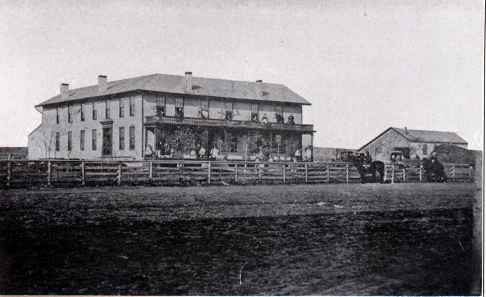
Something happened along the road to success, both for the Sulphur Springs Town Company and Erastus Beadle. In June, he was offered the job of postmaster for Saratoga, and declined. 34-year-old Erastus’ fiscal backers were losing money, and Erastus became anxious about getting home to New York and his wife and three kids.
On July 20, 1857, he resigned from the company, and soon after left town. He bought a farm he called “Rock Brook” at the present-day location of the Happy Hollow Country Club, and then he was gone.
Then, in August of 1857, a panic rocked financial markets around the world. Wildcat bankers throughout eastern Nebraska were going under, including one led by the same men who ran the Sulphur Springs Town Company.

In October 1857, Saratoga went broke, and within a month the town was abandoned. In 1858, Beadle sold the deed to his farm and moved back to his family in New York. In 1860, Beadle established the dime novel industry and became a millionaire, virtually building all of Cooperstown, NY. His contributions to the American publishing industry are widely recognized.
In 1858, the first-ever Douglas County Fair was held in Saratoga. Located between Ames Avenue and Sprague Street from North 16th to North 24th Streets, it was apparently a big affair for the emerging region. Major John T. Croft (1815-1910) homesteaded in Saratoga in 1856 and owned a farm in the area where the fair was held, but in 1858 lost it because of a bad title. Surrounding the entire area from Sprague to Ames with a wooden fence, there were more than a hundred exhibitors facing off for top prizes of $200 and more. Cash prizes were awarded to the hundreds of exhibitors at the fair, including the “oxen class” for the strongest and best trained animals, and the “culinary class” awards for the best five pounds of butter and cheese, and the best two loaves of bread and gallon of syrup. The best pairs of men’s boots and women’s shoes got awards, along with the best pants, coats, vest and horseshoe. The best bonnet, artificial flowers and needlework also received awards. Only one prize was awarded for corn, since it wasn’t a major cash crop in Nebraska yet, but peas got multiple awards worth $1. Happening on September 30 and October 1, 1858, the fair was held in Saratoga for years afterwards. For the next fifty years it was held back-and-forth from Saratoga to Omaha.
Existing in a Early Town

Saratoga didn’t stop existing after Beadle left. With his departure and the company’s formal abandonment of the town, all formal elements of its existence ceased. However, there were homes and businesses, a church and stores, light industry and other institutions that stayed there.
A one-room schoolhouse was built on the northeast corner of 24th and Ames in 1866 to serve as the Saratoga School. As early as 1869, there was a school at 42nd and Grand in District 42 in West Saratoga. The Brownell Hall moved to Omaha in 1866, and that building at 24th and Grand became the Grand Hotel, which eventually became the Saratoga Hotel. Rebuilt at 24th and Ames in the 1890s, the Saratoga Hotel eventually housed a longtime drugstore that became Lane’s Rexall, as well as the neighboring storefronts for Johnson’s Hardware, a liquor store, and the original Max I. Walker dry cleaners.

The Saratoga post office closed when the town folded in 1858. A man important to Nebraska state history, Alexander McCandlass, bought a quarter of Section 20 in Saratoga in 1859. McCandlass actually had to take the Nebraska Territory to court in order to enforce the claim he’d made on the land, but reportedly he eventually sold it for a healthy profit.
The Brownell Hall School opened in the old hotel in 1861, led by the ambitious Episcopalian Bishop William Wentworth. In 1866, he moved the school to South 10th Street near his mansion in Omaha’s original Gold Coast neighborhood. The Douglas County Agricultural Society was organized in 1868 in Saratoga, and held it’s first fair on land at Laird and Boyd Streets, and 16th and 20th Streets, that year.
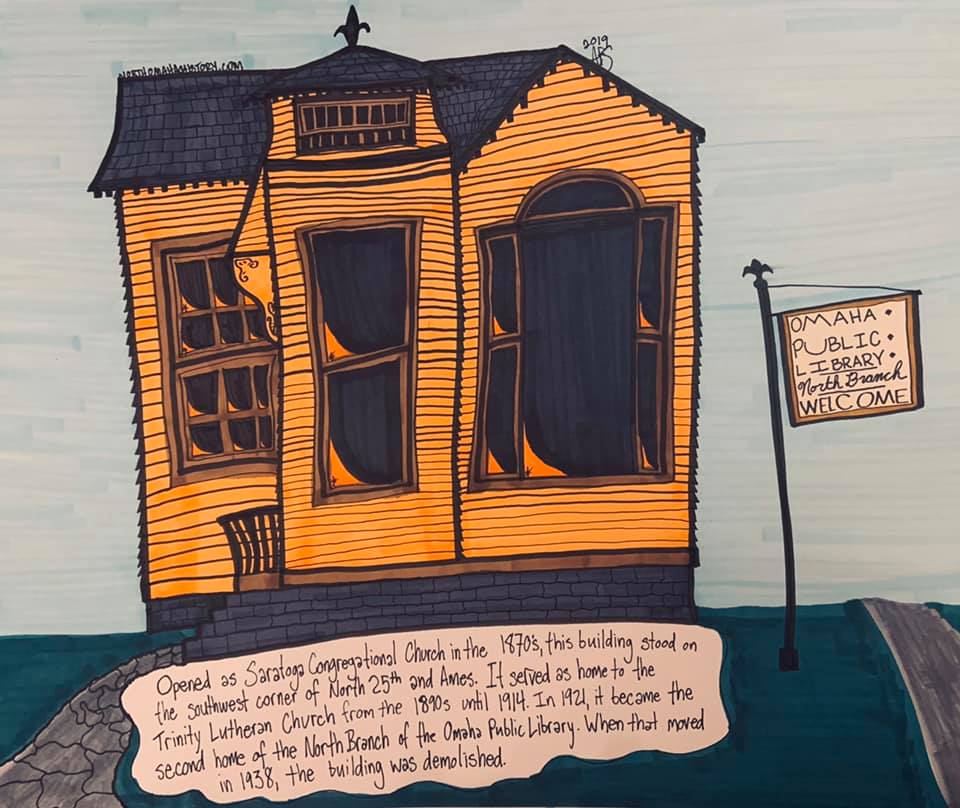
The Saratoga Brewery opened at 16th and Commercial Avenue in 1862, and eventually became the Storz Brewery, one of Omaha’s powerhouses through the 1960s. It moved to Sherman Avenue aka North 16th Street in the 1880s. Founded in the 1860s, the Congregational church was eventually known as Fourth Congregational Church, and then Plymouth Congregational. The
In 1866, much of the area was platted into the posh Kountze Place subdivison, and in 1877 it was annexed into Omaha. The Sulphur Springs addition was added into the City of Omaha around the same time, and featured much of the land that was valuable to the town of Saratoga.

From approximately 1875 through the 1910s, Saratoga was home to a race track that also served as the Nebraska State Fairgrounds and the Douglas County Fairgrounds called the Omaha Driving Park. The fairgrounds eventually becoming part of the grand Trans-Mississippi and International Exposition. While Buffalo Bill’s Wild West show was located in Saratoga, and the hotel was packed with visitors while streetcars plied in and out of the neighborhood’s streetcar barn, all vestiges of this being a pioneer town disappeared. Streets were paved in bricks before the crowds came for the Expo, and all the olden days appeared gone forever. The Nebraska State Fair was held in Saratoga almost every year until 1900, when it was permanently moved to Lincoln.

In the 1880s and 1890s, the neighborhood was served with citywide passenger service by the Belt Line Railway. This railroad sliced through the southern part of the neighborhood by Taylor Avenue. There was a local depot south of Ames on North 22nd Street called the Oak Chatham Station, and passengers from the Saratoga neighborhood could ride the rails to Walnut Hill, Lake Street, Druid Hill, or downtown to the Webster Street Station.
2,000 people gathered to celebrate when the YMCA Athletic Park opened on the northeast corner of N. 25th and Ames in 1899. The park included a quarter-mile bicycle and running track, a baseball diamond, trap shooting, handball, quoits and cricket, as well as tennis courts. There were showers, baths, rubbing tables and dressing rooms, too. It was gone by the 1930s.
Surely starting at the town’s founding in 1856, there was a dump along a small creek that flowed south and east from North 24th and Grand Avenue to North 22nd and Meredith Avenue, and east toward North 16th and Commercial Avenue. This creek bed was eventually clogged with trash, and in 1916 it was cleaned and covered. The grounds became home to Omaha University’s football field, explored later in this article.
West Saratoga

The final part of Saratoga was another village in the township originally called West Saratoga, then Cherry Hill, and now Central Park. It was about two miles west, at N. 42nd and Grand Avenue. West Saratoga was a country village that had a schoolhouse and a general store. The school served as the Congregational church, too.
After emerging in the 1860s, West Saratoga had a schoolhouse and mercantile store, a church other shops. There were several of houses in the immediate area on small lots by 1879, and a Jewish burial ground called the Golden Hill Cemetery was opened by Chevra B’nai Israel Adas Russia in 1888. A new West Saratoga School was built in 1885 to replace the original one room schoolhouse, and the town began to be called Cherry Hill. The school, originally located on the southwest corner of North 42nd and Grand Avenue, was rebuilt again later and called Central Park School. The neighborhood was called Central Park starting around 1900. Its disassociation with Saratoga was complete by then.
Saratoga in the 20th Century

The Saratoga neighborhood infilled by the 1920s, hitting its stride into the 1960s. From the 1890s through the 1960s, the intersection of N. 24th and Ames Avenue was a bustling, busy commercial district. With street cars running straight through the area and a major street car barn located near the intersection, there was a lot of traffic.
After Saratoga School was rebuilt and then transferred to Omaha University as a science lab in 1917, a new school was built for the neighborhood at N. 25th and Meredith Ave in 1927. This was a modern building built in dark brown bricks, and was an exceptional building for its time. The building is still in use today, with major interior and minor exterior renovations through the years.

Across the street from the Lutheran Church of Our Redeemer at North 24th and Larimore, Bickell’s Meat Market was a long-standing and popular store. In addition to the A and P Supermarket, other businesses after the turn of the century included another supermarket, a Rexal drug store, a dinner, and other stores. Star Liquor Store and LaRue Barbershop were also at the intersection. The A&P building is still standing today, with the front windows boarded over. The building where the Rexal, liquor store and barbershop was demolished in the 1990s. In the theatre building on the southeast corner of North 25th and Ames were a series of businesses, including a Safeway that was at 2421 Ames Avenue from 1916 to 1950.

Borden’s Ice Cream Shop was located at 2415 Ames Avenue, serving malted milk, ice cream flavors, and sundaes. It was open from at least the 1910s through the 1950s. This building was demolished in the 1980s. The Third Church Christ Scientist was built next door to the Stroud Mansion in 1950. The Stroud mansion was built in 1905, and demolished in the late 1960s to make room for the Florence Tower, which stands there today. In the early 1960s, Plymouth Congregational Church merged with Irvington Congregational and moved to northwest Omaha.
While the earliest road to the town of Saratoga was Saunders Street, once called Main Street in Saratoga, perhaps the most distinguishing road in the town at the turn of the century was Florence Boulevard. Traveling north from the city of Omaha, it was a finely cared for roadway, and was among the first major paved roadways in Omaha. Because of its importance, there were early gas stations, hotels and a variety of other services along the way, including in Saratoga.
The Druid Hall by 24th and Ames was built for the local Woodmen of the World chapter in 1917. The storefronts pictured above include a millinery (hat maker) and a hardware store. In addition to those, there was a bowling alley and gambling room in the basement of this building. The upper floor had a large ballroom and women’s room, as well as a full kitchen. The first floor also had a meeting room. After scrounging up funds for construction, the Woodmen operated the hall through the 1940s. From then through the 1970s, an American Legion Post operated the building. In the 1970s, the Most Worshipful Prince Hall Grand Lodge of Nebraska took control of the building and continue to operate there. These Prince Hall Masons provide very important social and cultural activities for North Omaha.

The intersection of 24th and Ames was completely vibrant during this era. It had mundane, day-to-day businesses as well as entertainments for people from the broader community beyond. The streetcars would bring in commuters, cars would zip around corners, a bank, a couple of grocery stores and a movie theatre, as well as the Druid Hall, were happening centers where friends would see each other and the neighborhood would buzz. The movie theater was called the Suburban Theatre. It was opened by Charles Jacobsen (1863-1945) and was the first theater in Omaha not located in the downtown core. It had 350 seats and was at 4414 North 24th Street.

Men worked in the factories and warehouses along the Belt Line, and there was a sense of industriousness. Included in the section featured above was the Omaha Motor Car Factory, the Stroud Company Factory, and then the plant and storefront for J. F. Bloom and Company. for By this point, all the churches were well-established and growing, including the Lutheran Church of Our Redeemer, Holy Angels Catholic Church, Pearl Memorial Methodist to the north, and the Presbyterian churches to the south. Saratoga was happening in the 1950s.
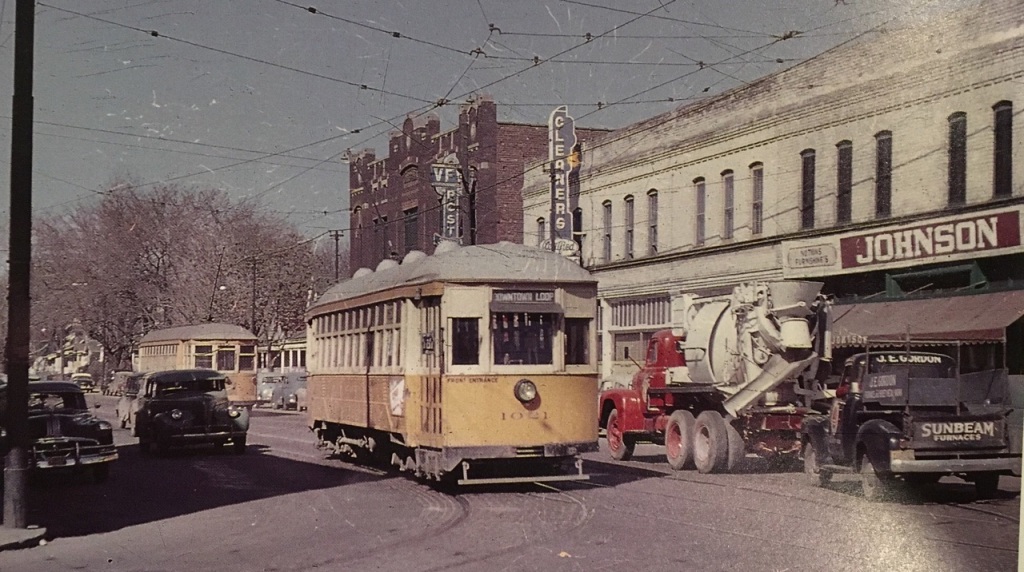
From the early 20th century through the 1960s, lots of businesses made their homes throughout Saratoga. There were large city-wide service laundries that brought their wares in from around town on the Belt Line, as well as light manufacturing places making new goods. There was also a large lumberyard, coal store, and milling operation in Saratoga.
After passenger service mostly ended in the early 1900s, the Belt Line’s owners at the Missouri Pacific Railroad kept it’s relevance by promoting its usage as an industrial line. Suddenly, factories sprang up throughout North Omaha along the Belt Line. There were several industries in the Saratoga neighborhood including a monument maker, a few major industrial laundries, a tractor manufacturer, a car maker, and other industries sprang up along the line. Although the line was ripped out of the neighborhood in the 1990s, it’s legacy is still obvious with all the industrial operations in Saratoga today.

The North Star Theatre was a beacon of the Saratoga neighborhood, and is among the 20 movie theaters located in North Omaha over the last century. Built it 1926, the theater sat 500 when it opened. Just like most neighborhood theaters at the time, North Star Theater had one screen. The building was laid out in an L-shape, with a lobby around the corner from the screen. The building was renovated in 1946, with the front looking like the picture above. Renamed the Ames Theater was closed by the 1960s, and has been used as a warehouse since then. After the Safeway mentioned earlier, the Roh Food Mart was in the theatre building at 2421 Ames Avenue from 1950 to 1957.

As this article shows, Saratoga wasn’t always a sedate, secluded neighborhood in North Omaha. When it was a leafy suburb just after WWII, the Spot Bar opened at 2305 Ames Avenue. In 1954, that bar was heavily damaged by a bomb made mostly from gunpowder. A 29-year-old man was charged with the incident after refusing a lie-detector test. The owner of the bar, Clarence Ziegler, reported more than $1,000 damage to the building. The suspect had been kicked out of the bar the previous April after a domestic dispute there. Apparently, the bar never opened again.
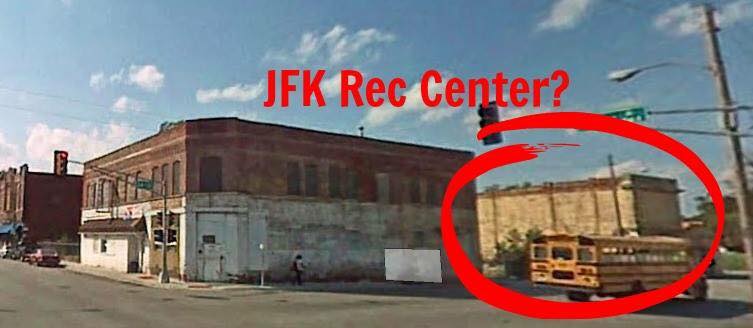
Beverly Blackburn was a youth worker in North Omaha for more than a decade before she started the John F. Kennedy Recreation Center in 1965. During the following five years, youth at the center enjoyed recreational, educational and empowerment activities. There were classes, programs, drop-in times and field trips throughout Omaha and beyond. In 1966, the City of Omaha took control of the JFK Center. In 1968, Blackburn died young, and in 1970 the City of Omaha shut down the JFK Center permanently. At the same time, the City of Omaha fought against the great work in this neighborhood by Beverly Blackburn and others in the neighborhood. Blackburn’s memory lives on though, with the nearby Blackburn Alternative School named in memorial to her.
Saratoga Today
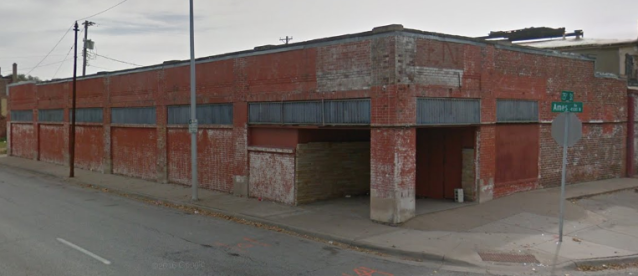
The zenith of the Saratoga neighborhood came in 1966. That year, riots struck 24th Street south of the neighborhood. A few years earlier in 1963, African Americans began moving into the neighborhood when the Fair Housing Act was passed. With both of those events, white flight struck the neighborhood and white people moved from Saratoga en masse. Systematic divestment by the City of Omaha set in and the streets, sidewalks, empty lots and overall lack of investment by city planners and the Omaha City Council continue to prove as testimony for their strategy of benign neglect in North Omaha even today.
Since the 1960s, most of the commercial core of Saratoga has been demolished. The streetcar barn on the southeast corner, the commercial buildings on the northeast corner, the commercial buildings on the southwest corner and many of the buildings along the old Belt Line are all gone. The Belt Line was ripped out in the 1980s, and that corridor has been left to rot since then.

Recently, the Prince Hall Masons succeeded in having their century-old headquarters building placed on the National Register of Historic Places, and today the Druid Hall stands as a testimony of the past grandeur and significance of Saratoga. Omaha Public Schools has substantially redeveloped Saratoga Elementary School over the last decade, but in 2017 they closed the school, and now it serves as a special needs facility for the district.
The A&P Supermarket building at 4515 North 24th Street still stands, and is currently used for a truck company, while the North Star Theater still stands across from the Druid Hall and is used as a storage facility. In that same building was the Borden Ice Cream Shop, among other businesses. Once located on the northwest corner of 24th and Ames was Lane Drug, along with the Metropolitan Building Loan Association, the JFK Recreation Center.
Originally home to the fine Gruenig Mansion, the northeast corner of 24th and Fowler is home today to the Eastern Nebraska Community Action Program. The original Pearl Memorial Methodist Episcopal Church, later home to the Lutheran Church of Our Redeemer, is still standing at North 24th and Saratoga.
Other mansions in Saratoga included the Rome Miller Residence and the Stroud Mansion.
A lost pioneer legacy in Saratoga means the city has to work that much harder to secure the legacy of the neighborhood.
I pieced together this history from Beadle’s diary, along with other materials from when I was writing the Wikipedia article about Saratoga, and other sources. I also learned that a lot of the land in Saratoga was bought by William Bennett and Sulphur Springs Land Company in 1857, who eventually sold off a lot more property.
Finding Lost Saratoga

During the Will Brown lynching and riots of 1919, there were fires set throughout the Douglas County Courthouse. They burnt the county assessor’s office and many of the records. Both when the assessor’s staff were recovering records and when owners went to sell their buildings next, they were asked to approximate the original construction dates. Several sellers took it upon themselves to report the construction dates to be newer than they actually were; otherwise, the assessor and his staff put the year they recovered the records – 1920. So there are a spate of buildings across all of the older buildings that were constructed in 1920 or thereabouts. That year, the census does not reflect significant population growth necessitating a construction boom, ergo there are many buildings that are older than the Douglas County Assessor’s Office records.
That said, I have tracked more than a dozen buildings in Saratoga that were built around 1920. Their construction styles reflect older vernacular trends that could extend far back, perhaps during the initial building phase from 1856 through 1856, or the second phase from ’68 through ’80.

If a person was severely committed to uncovering more about the history of this community, they’d go to the Douglas County Historical Society – Nebraska at the General Crook House and research their information about Saratoga. We need an original plat map from the Town of Saratoga or one from the next 40 years to cover the difference.
Also, its important to keep in mind the differences and connectedness of Saratoga and Sulphur Springs. Sulphur Springs was essential the docks for Saratoga. However, it was supposedly entirely wiped out by an 1877 flood, so there shouldn’t be much on paper after that point.
I have studied the original diary of the town founder, Erastus Beadle, for his mentions of buildings built in the first year. We’d need to collaborate on anything built after that. As a note, that rule about the age of buildings is true across ALL of North, South and downtown Omaha. I have seen the Nebraska State Historical Society duped by the county records, as well as several other historians.
You Might Like…
MY ARTICLES ABOUT THE HISTORY OF SARATOGA
General: Timeline | Saratoga Belt Line Historic District | Tour of Saratoga Historic Sites
Homes: Stroud Mansion | Gruenig Mansion | Rome Miller Mansion
Businesses: J. F. Bloom and Company | Omaha Motor Car Company | Stroud Company | 4225 Florence Blvd | 4426 Florence Blvd | Saratoga Springs Hotel | Max I. Walker Cleaners | Imperial Sash and Window Factory | Metropolitan Building and Loan | J. F. Bloom and Company | Omaha Motor Car Company | Stroud Company | North Star Theater aka the Ames Theatre | Suburban Theater | LaRue’s | 4515 North 24th Street | Borden’s Ice Cream
Events: Trans-Mississippi and International Exposition | Greater America Exposition
Transportation: Belt Line Railway | North 16th Street | North 24th Street | North Freeway | Streetcars | Railroads | 24th and Ames Intersection
Other: Saratoga School | Saratoga Fire Station | Sulphur Springs | Druid Hall | John F. Kennedy Recreation Center | Omaha Driving Park | Prairie Park Club | YMCA Athletic Park
Surrounding Neighborhoods: Miller Park | 30th and Ames | Sherman | Kountze Place | Bedford Place | Monmouth Park | Collier Place
MY ARTICLES RELATED TO THE HISTORY OF AMES AVENUE
NEIGHBORHOODS: Saratoga | Collier Place | Monmouth Park
INTERSECTIONS: 30th and Ames | 40th and Ames | 24th Street | North Freeway | Fontenelle Boulevard
BUSINESSES: LaRue’s | Max I. Walker | North Star Theater aka Ames Theater | King Solomon’s Mines aka Shaver’s | Beacon Theater | Parkside Cafe | Ames Plaza | Battiato’s Super Market | Mergen House
PUBLIC PLACES: Ames Avenue Bridge | Saratoga School | Charles Washington Branch Library | Monmouth Park School | North High School | Fontenelle Park
OTHER: Druid Hall | St. Vincent’s Retirement Home | Ames Avenue United Methodist Church | Mergen House
MY ARTICLES ABOUT THE HISTORY OF NORTH 16TH STREET
Places: 16th and Locust Historic District | Charles Street Bicycle Park | State Bar and McKenna Hall | Storz Brewery | Warden Hotel | Grand Theater | Nite Hawkes Cafe | Tidy House Products Company | 2621 N. 16th St. | New Market | 3702 N. 16th St. | Sebastopol Amphitheater
Historic Homes: J.J. Brown Mansion | Poppleton Mansion | Governor Alvin Saunders Estate | Ernie Chambers Court aka Strehlow Terrace | The Sherman Apartments | The Climmie Apartments
Neighborhoods: Near North Side | Lake Street | Kountze Place | Saratoga | Sulphur Springs | Sherman
Events: 1898 Trans-Mississippi and International Exposition | 1899 Greater America Exposition | 1960s North Omaha Riots | “Siege of Sebastopol”
MY ARTICLES ABOUT HISTORIC NEIGHBORHOODS IN NORTH OMAHA
National Register of Historic Places Historic Districts in North Omaha: 24th and Lake Historic District | Benson Downtown Historic District | Country Club Historic District | Dundee/Happy Hollow Historic District | Fairacres Historic District | Fort Omaha Historic District | Minne Lusa Historic District | Nicholas Street Historic District
Historic Neighborhoods in North Omaha: Bedford Place | Belvedere Point | Bemis Park | Benson | Briggs | Bungalow City | Carter Lake, Iowa | Central Park | Clifton Hill | Collier Place | Creighton University | Crown Point | DeBolt | Druid Hill | East Omaha | Fairfax | Florence | Florence Field | Fort Omaha | Fontenelle View | Gifford Park | Gold Coast (Cathedral) | High Point | Jefferson Square | Kellom Heights | Kountze Place | Lakewood Gardens | Little Russia | Long School | Malcolm X Memorial | Miller Park | Miller Park Duplex Historic District | Monmouth Park | Montclair | Near North Side | North Downtown Omaha | Omaha View | Orchard Hill | Plum Nelly | Prettiest Mile in Omaha | Prospect Place | Raven Oaks | Redman | Saratoga | Sherman | Squatter’s Row | Sulphur Springs | Ponca Hills | Wakonda | Walnut Hill | Winspear Triangle | Wyman Heights
Lost Towns in North Omaha: Benson | Briggs | DeBolt | East Omaha | Florence | Saratoga | Sulphur Springs
MY ARTICLES RELATED TO SPORTS IN NORTH OMAHA
People: Dorcas Thornton | Will Calhoun
Teams: Omaha Rockets
Organizations: Red Dot Athletic Club | Near North YMCA | Gene Eppley Boys Club | Midwest Athletic Club | Omaha Colored Baseball League
Places: Kountze Place Golf Club | YMCA Athletic Park
Elsewhere Online
- Show #9: The Town of Saratoga, North Omaha History Podcast
- “A Thousand and One Little Delays: Training the Missouri River at Omaha, 1877-1883” by Lawerence Carroll Allin for the Nebraska State Historical Society
- Ham, Eggs and Corn Cake: A Nebraska Territory diary by E. F. Beadle
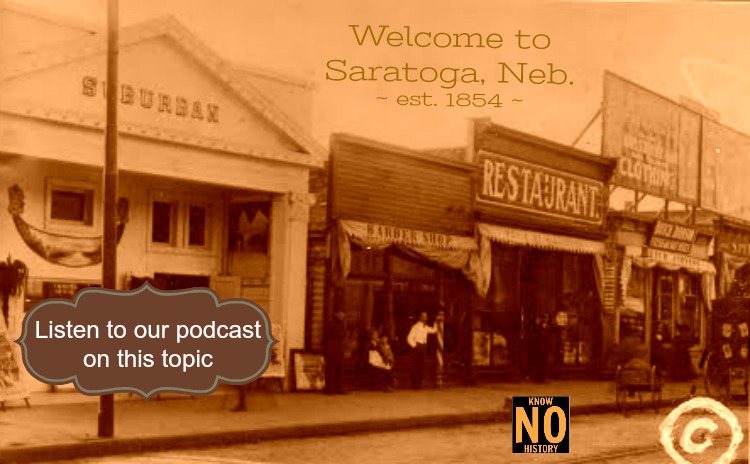
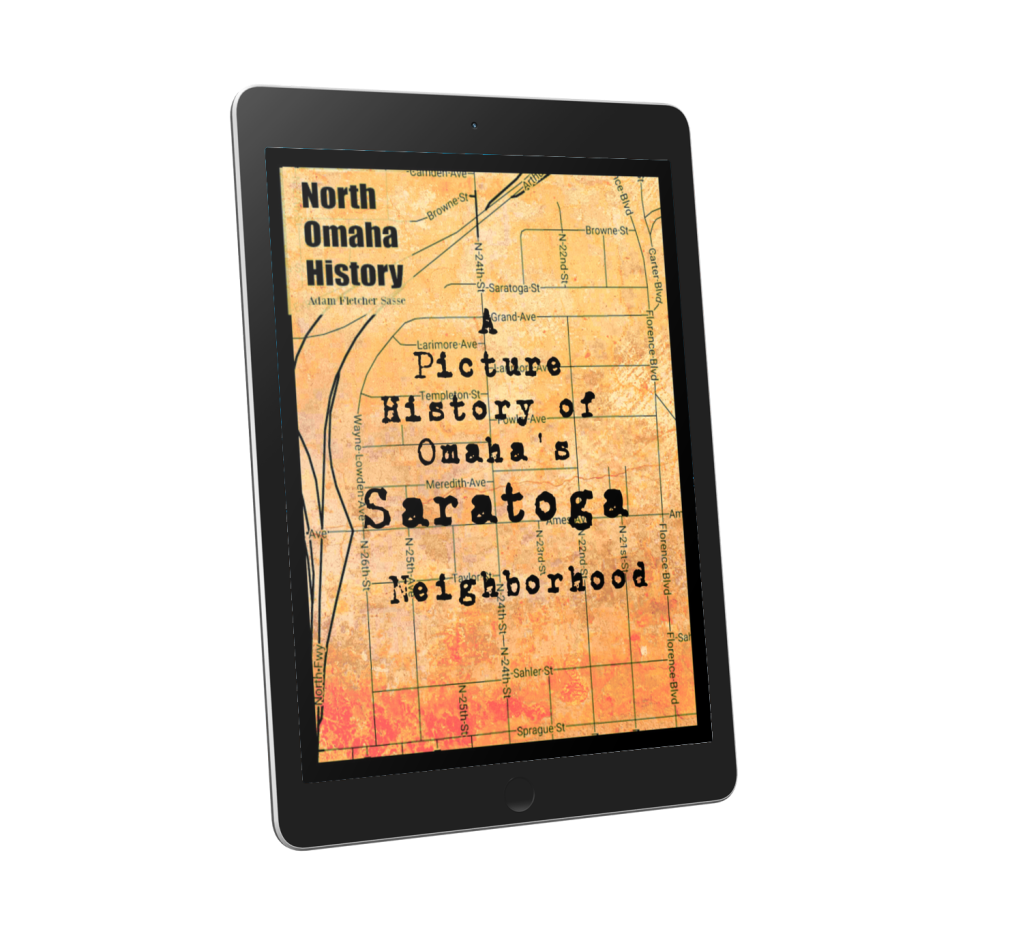
FREE E-BOOK!
A Picture History of Omaha’s Saratoga Neighborhood
by Adam Fletcher Sasse for NorthOmahaHistory.com
This never-before explored neighborhood’s history is identified here for the first time, with pictures and explanations for many formerly forgotten places.
This is a 65-page book for your phone, tablet or e-reader that features more than 55 different places in the neighborhood’s long history, starting in 1867 and coming up to today.
Bonus Pics!


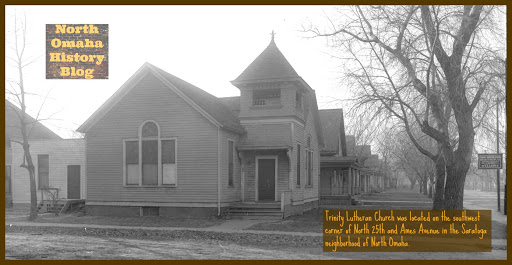
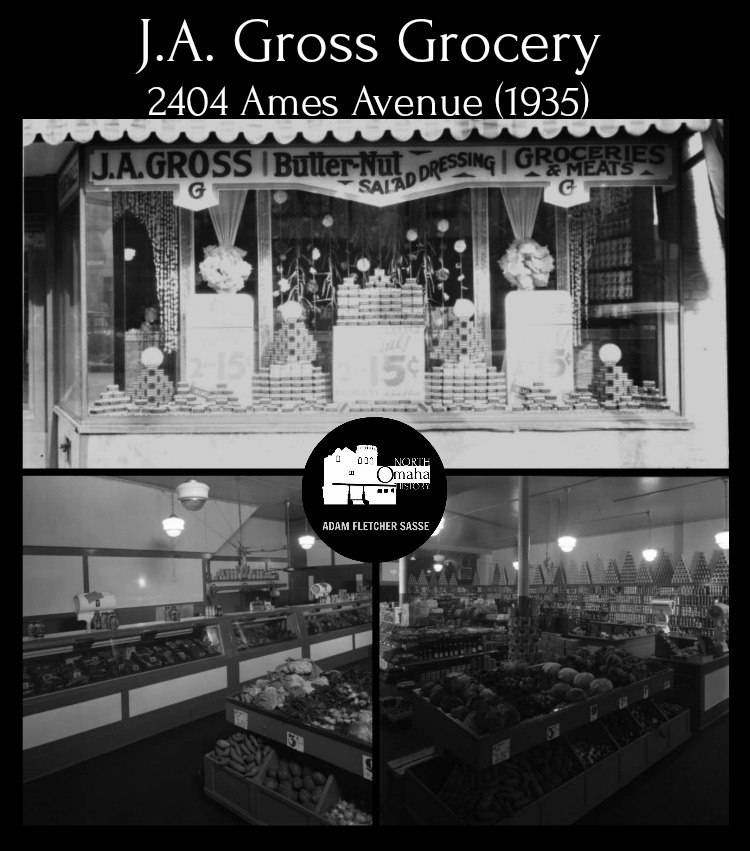

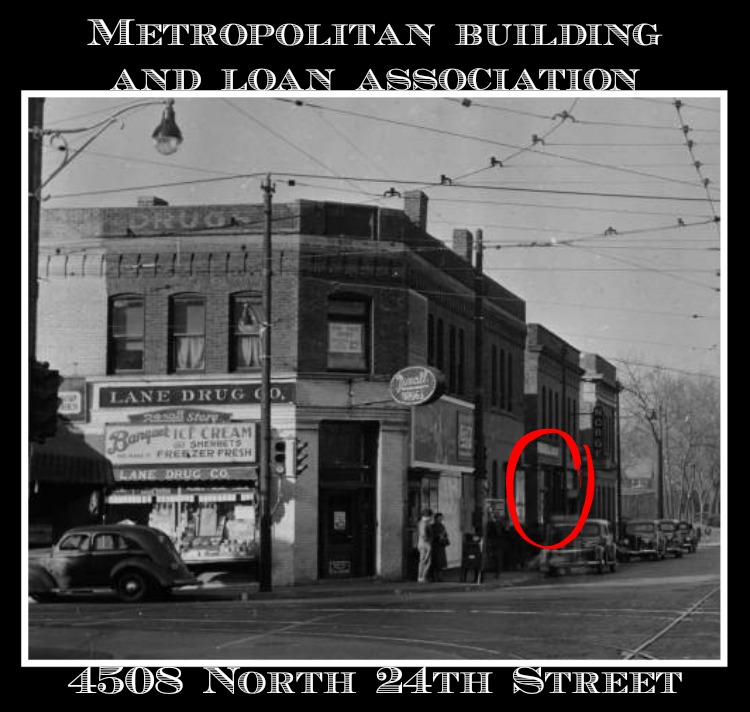
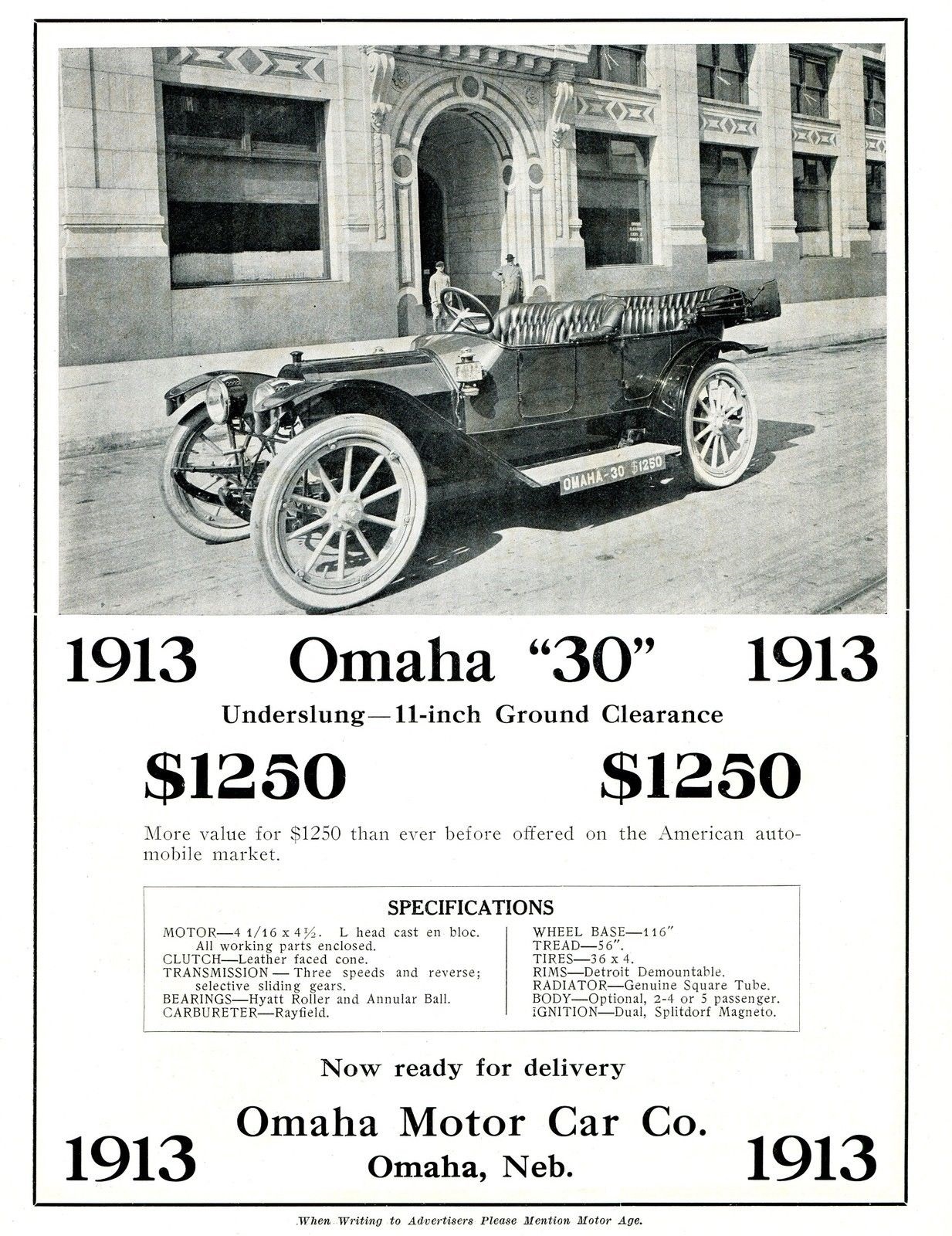
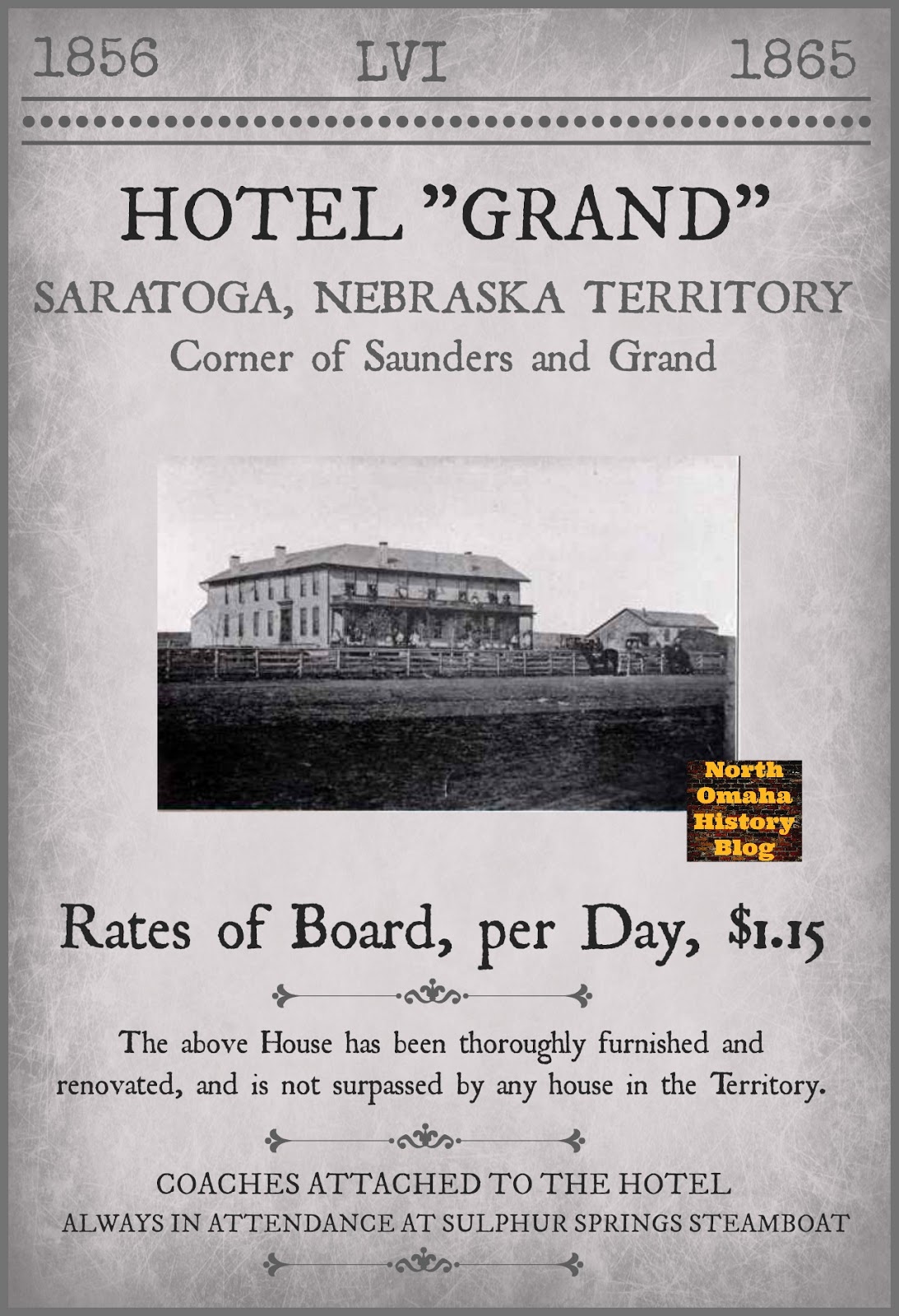


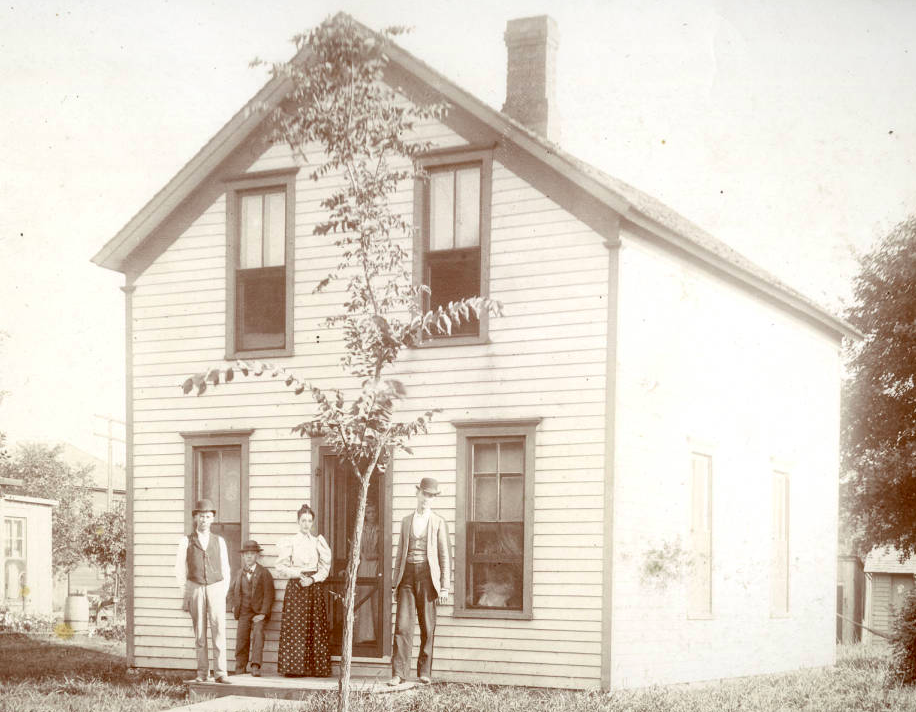

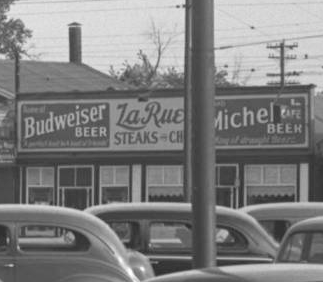

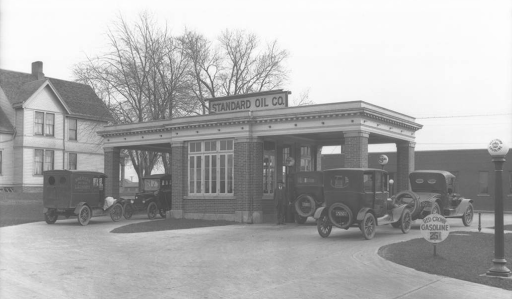





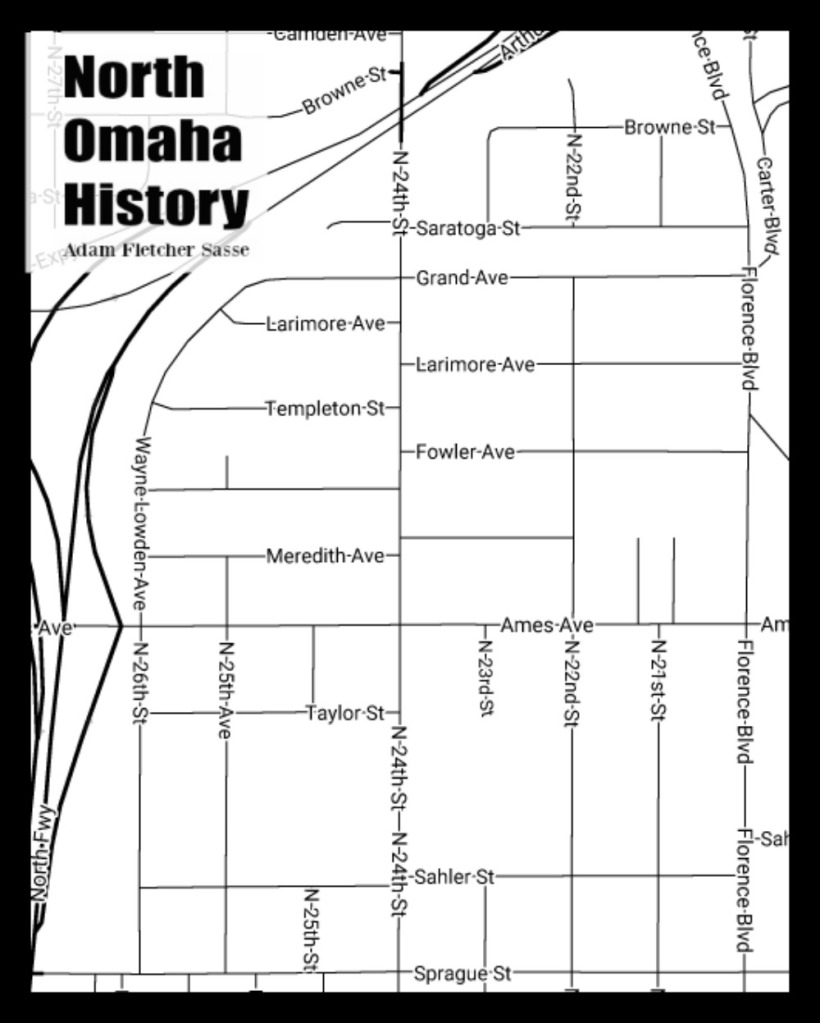



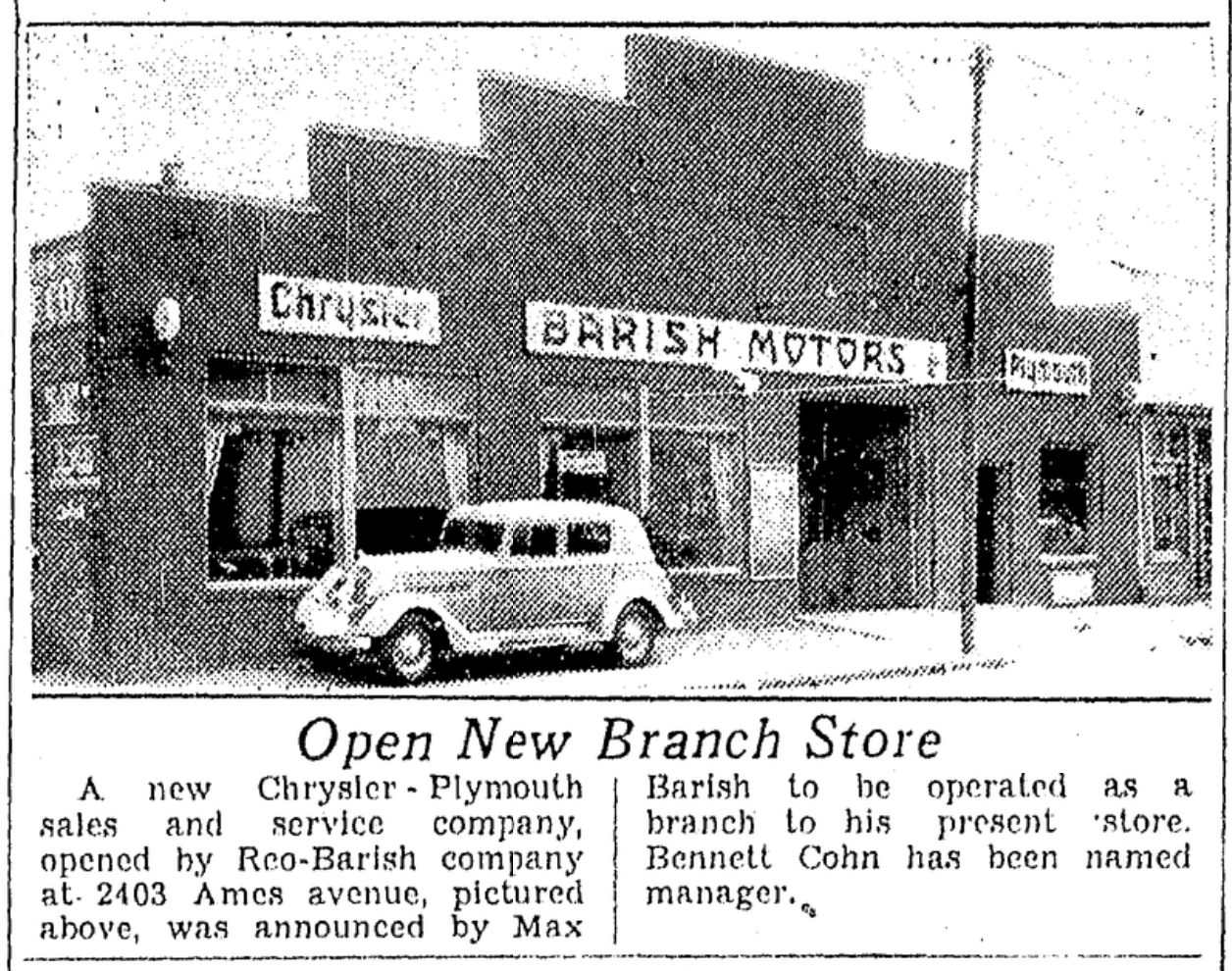


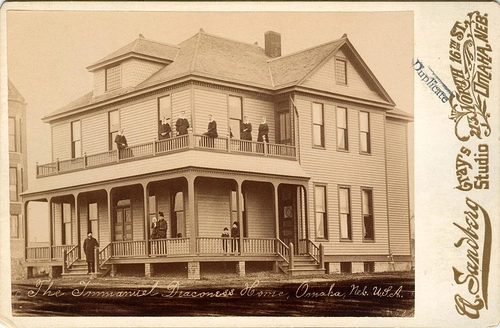

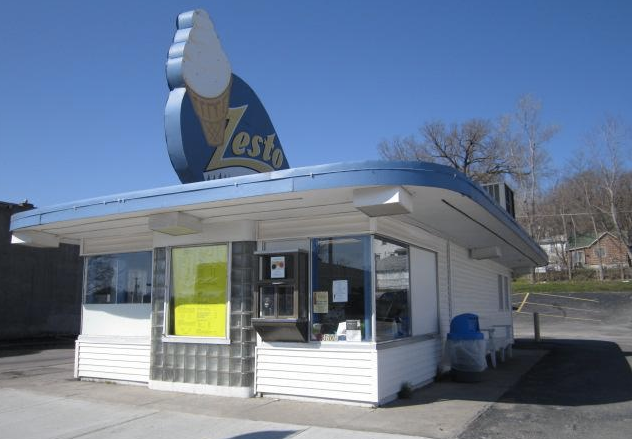
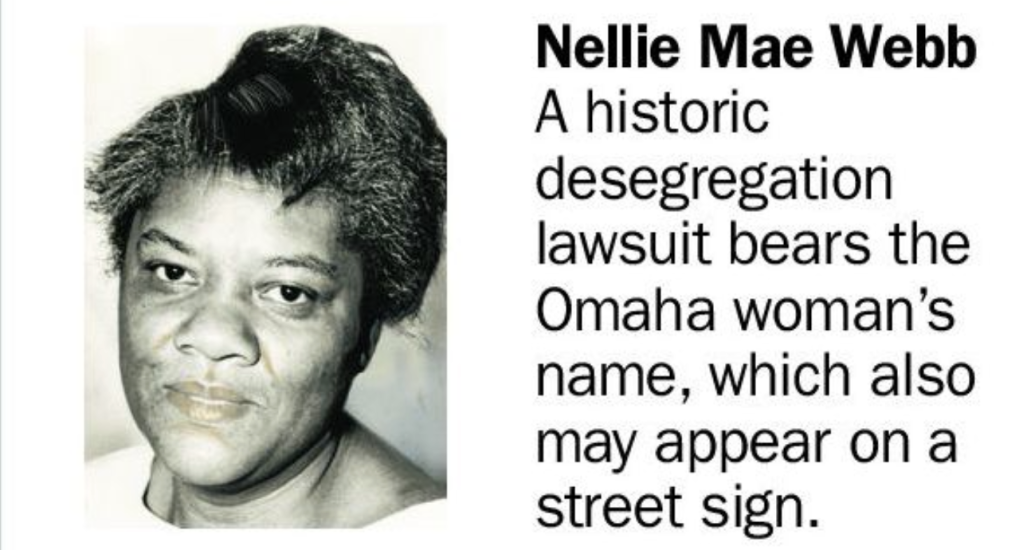
Leave a comment